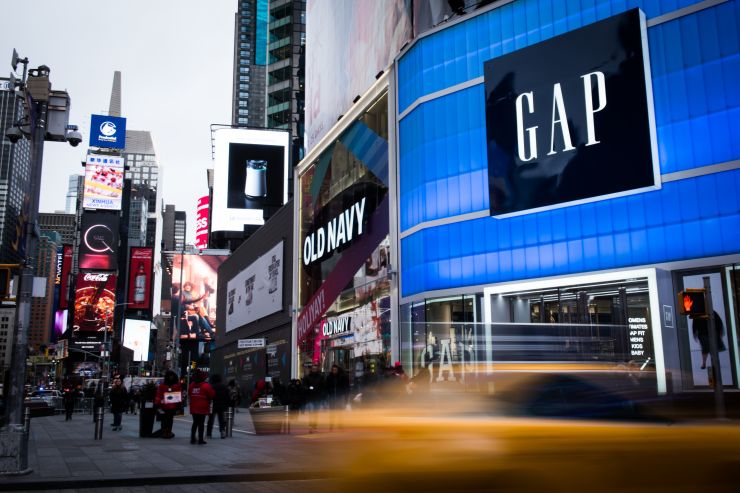
Gap Inc. said Thursday it will split into two independent publicly traded companies — one of just Old Navy, and then a yet-to-be-named company that includes its other brands like Banana Republic and Athleta.
Its shares surged more than 20 percent in after-hours trading on the news.
Following a review by Gap’s board of directors, “it’s clear that Old Navy’s business model and customers have increasingly diverged from our specialty brands over time, and each company now requires a different strategy to thrive moving forward,” Gap board Chairman Robert Fisher said.
Gap said the new company, which it’s currently referring to as “NewCo,” should make roughly $9 billion in annual sales. It will include the namesake Gap brand, Banana Republic, Intermix and athleisure lines Athleta and Hill City.
Old Navy, meanwhile, brings in about $8 billion in annual sales by itself. This brand has notably been the strongest within the company, as Gap’s namesake label has struggled to grow sales of late. Old Navy has been successful in targeting shoppers on a budget, rivaling off-price channels like TJ Maxx and Ross Stores.
Gap Inc.’s current CEO, Art Peck, will remain CEO of “NewCo,” Gap said. Sonia Syngal, the current president and CEO at Old Navy, will lead the new public, standalone Old Navy company.
The spin-off should help both companies operate with “a sharpened strategic focus and tailored operating structure,” Peck said in a statement. The transaction is expected to be completed in 2020, subject to final approval by Gap’s board of directors.
Gap also on Thursday announced it plans to shut 230 of the namesake brand’s locations over the next two years, as it works to restructure its business. The retailer posted mixed results for the holiday quarter. To revive the Gap brand, it said it’s working on multiple initiatives to fix the fit of its products and “modernize its marketing.”
Gap shares have fallen roughly 20 percent over the past 12 months, bringing its market cap to about $9.7 billion.
